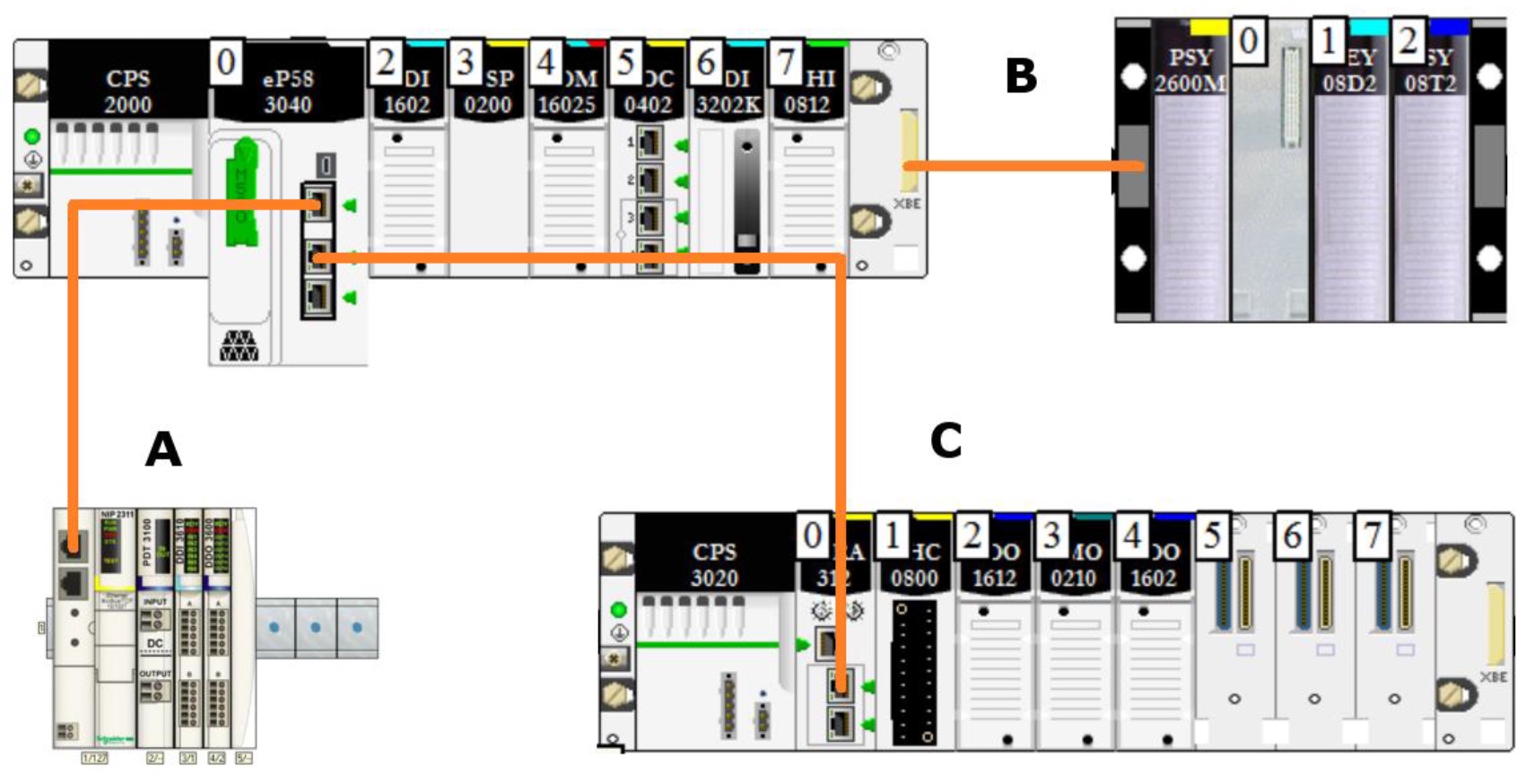General Queries & Answers
M580 Basics
Q.1: For each part of the following picture, select which kind of I/O is used:

A: Device I/O
B: Local I/O
C: Remote I/O
Q.2: What are the three types of I/O? Which ones are faster to configure?
Local I/O
Remote I/O
Device I/O
Local I/O and Remote I/O are usually faster to configure than Device I/O.
Q.3: What are the purposes of the SERVICE port?
Most of the time the service port is connected to a SCADA, but it can also be connected to a Device I/O Drop, to Unity Pro, or to a computer for port mirroring and traffic analysing.
Q.4: What is the advantage of Device DDT over topological addressing?
The main advantage of Device DDT over topological addressing is that there is no need to map the I/O.
Q.5: How to access the security parameters of the M580?
To access the security parameters of the M580, open the main rack, double click the ports of the CPU, click channel 0 and the security tab.
Q.6: To ensure higher cyber security; which services should be disabled?
To ensure higher Cyber Security it is best to disable all unused protocols
Device I/O
Q.7: What kind of device can be included in a DIO drop?
It is possible to connect any DTM device to a DIO drop, including non Schneider-Electric devices.
Q.8: What is the main advantage of device integration? (You can take the Altviar drive as an example)
Device integration makes integration of devices easier by configuring and testing them from single software.
NOC
Q.9: What are the possible roles of a NOC?
A NOC has the same use as the service port of M580; it can be used to connect a drop to a SCADA or to connect DIO drops. In both cases, using a NOC instead of connecting directly to the M580 reduces the resources used by the M580.
Q.10: Which BME NOC modules support FactoryCast?
The 0311 support FactoryCast.
Remote I/O
Q.11: What is the main advantage of an RIO drop over a DIO drop?
Remote I/O drops are usually much faster to configure than Device I/O drops.
Q.12: Which service needs to be enabled in the M580 security features to allow the use of a RIO drop?
TFTP needs to be enabled in order to being able to build a project with a RIO drop.
Premium I/O
Q.13: Which type of I/O is a Premium I/O drop: local I/O RIO or DIO?
A Premium I/O drop is considered as a local drop.
Q.14: What type of cables do you need to connect the main rack to the PIO drop?
To connect a PIO drop to the M580 main rack, you will need X-bus cables.
M580 Hot Standby
Q.15: Which version of Unity Pro do you need to configure Hot Standby architecture?
HSBY architectures are configured via Unity Pro v11 or later versions.
Q.16: How can you check if the PLC is A or B and primary or secondary?
To check if the PLC is A or B and Primary or Secondary you can either look the M580's LED panel, or check the M580 Device DDT.
Advanced Cyber Security
Q.17: How does the memory protect and run/stop protect features work?
Run/Stop protect is a feature that makes the PLC reject any start/stop command unless a specific input is ON.
Q.18: When are the integrity check performed?
Unity Pro automatically performs an integrity check when you first open an application. Beyond the first check, Unity Pro will automatically run the integrity check periodically.
Make the Most of the M580
Q.19: What are the two purposes of using an SD card with the M580?
The SD memory card is optional and is used for application backup and data storage.
Q.20: What is the role of the M580 web pages?
Embedded web pages are used for diagnostics and monitoring information.
